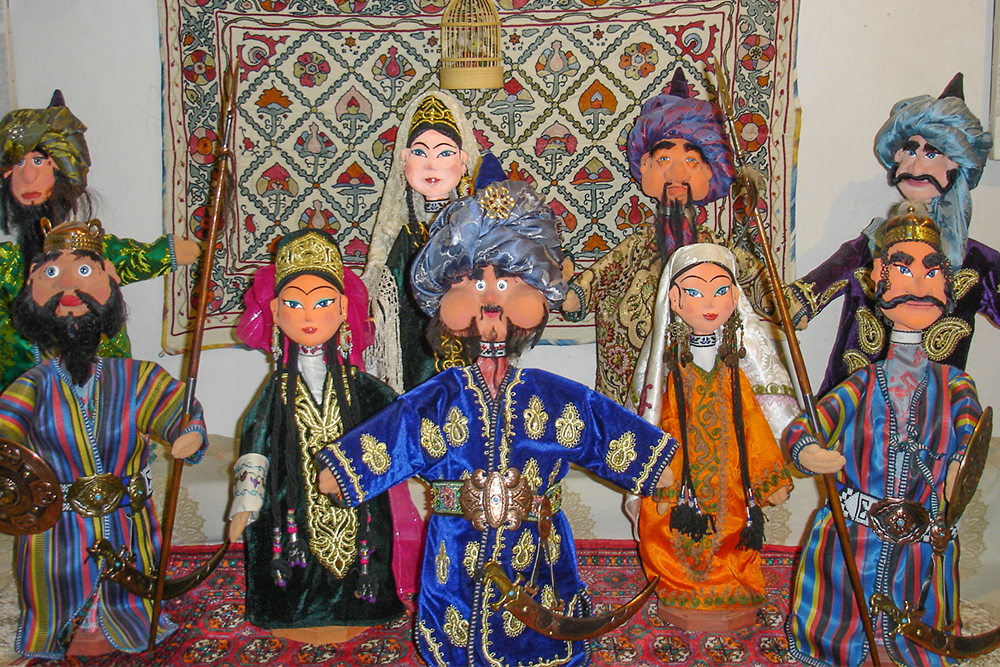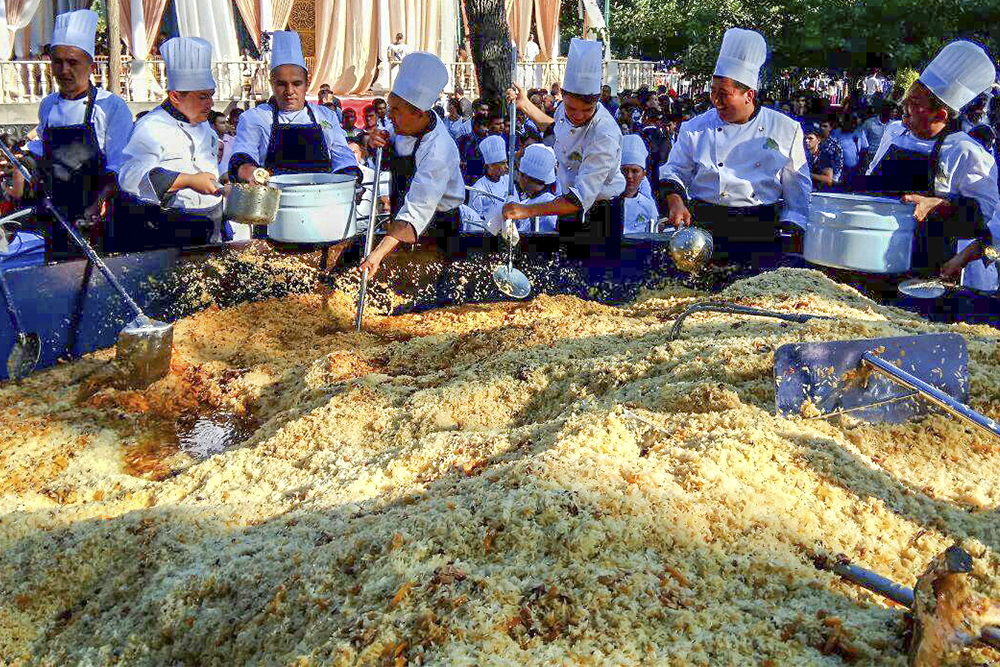Republic of Uzbekistan is a young state of Central Asia which has become independent in 1991.
The territory of Uzbekistan is 447.4 thousand square km. The distance between southern and northern geographic extremes of the country is 925 km while it is 1400 km wide from west to east. Uzbekistan borders on the neighbor states of Kazakhstan, Kyrgyzstan, Turkmenistan, Tajikistan and Afghanistan.
Tashkent is the capital of Uzbekistan.
Uzbek is the state language. Russian is a language of interethnic communication for representatives of more than 100 nations and nationalities living on Uzbekistan territory.
The population of Uzbekistan is more than 30 million people. The rural population makes 60% of it. There are 16 major cities with population of more than 100 thousand people in Uzbekistan.
Annual birth rate is about 450-500 thousand people. Average family consists of 5-6 members. Children and adolescents below 15-year old jointly make 43%.
Administrative division of the country: Uzbekistan consists of 12 regions (viloyats) and the Karakalpak Autonomous Republic.
The climate of Uzbekistan is extremely continental with short and warm winter and hot long summer. Averages January air temperature reaches minus 2° - 5° C (while absolute minimum record is minus 38° C). Average July temperature vary from 30° to 38° C (while absolute maximum is plus 49,6° C). Duration of solar shining is approximately 300 days per year.
Uzbekistan is a country with the richest history. It is a motherland of most ancient civilizations. Such powerful states as Baktria, Sogdiana, Parthia and Khorezm arose, blossomed and faded here. In Middle Ages (15th century AD) the territory of modern Uzbekistan was the centre of vast Empire created by cruel Mongol-Turkic commander, "the Master of Constellations" – Tamerlane. More than 20 centuries ago numerous caravans carried precious silk, gold, porcelain and spices along the Great Silk Road connecting China to Europe.
Uzbekistan is proud to be the motherland of world-famous and prominent medieval scientists and poets - Avicenna, Alisher Navoi, Ulugbek, Al-Khorezmi, Beruni, Al-Farghoni, Imam Al-Bukhary and others. Thousands years ago fascinating cities with wonderful palaces, mosques, madrasaahs, parks and gardens were built on the territory of present-day Uzbekistan. Most of them were destroyed but some remained enabling inquisitive traveller to admire the monuments of medieval Samarkand, Bukhara and Khiva.
High and elegant minarets, grandiose mosques, medieval palaces and mausoleums decorated by amazing ornaments, unique vanity and bright colours of oriental markets, ancient legends, traditional hospitality and century-old traditions of local people involve numerous tourists from all world to Uzbekistan.
Uzbekistan is rich in diversity of natural resources. Kyzyl-Kum desert - the greatest in Central Asia is spread on vast territory lying between the Aral Sea and Tien-Shan, Pamir mountain ranges of. Thousands of water springs flow down the mountain slopes into two largest rivers of Asia - Amu Darya and Sir Darya. Through efforts of highly skilled local farmers the lifeless steppes and deserts are turned into oases where cotton, wheat, grapes and other cultures grow for centuries. The green aprons of fields are surrounded by mountain ranges covered by eternal snow and glaciers. Flora and fauna of Uzbekistan are also rich.
More than 3700 species of plants, 97 species of mammalian, 379 species of birds, 69 species of fishes are listed here. Uzbekistan is a country with well developed industry. Airplanes and tractors, automobiles and buses, cotton-pickers and textile machinery, refrigerators and lifts are among the products manufactured in Uzbekistan for domestic as well as international market. The country has well developed mining, chemical, non-ferrous metal and steel industry (including production of high-tech refractory metals and alloys).

 Centralasia Adventures
+998781506280
Centralasia Adventures
+998781506280
28, Mukanna str.
Uzbekistan
Tashkent region
100070






